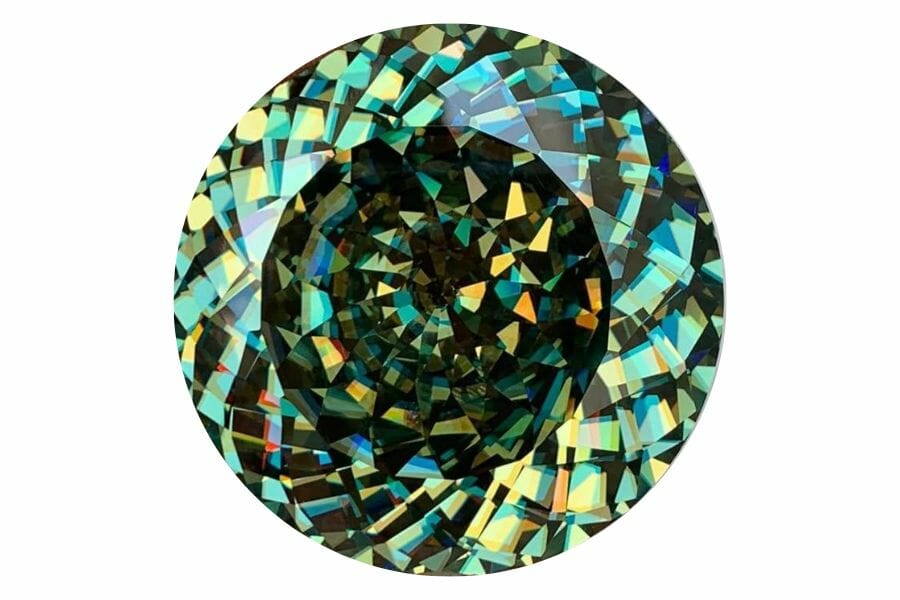Two of the most popular diamond alternatives out there are moissanite and cubic zirconia. Both of these stones are stunning in their own right and have found their way into many jewelry pieces, from engagement rings to elegant earrings.
Yet, when it comes to their properties, there’s more than meets the eye. To distinguish moissanite vs cubic zirconia, we need to dive a bit deeper into their characteristics.
While both gems are clear and shiny, they have different levels of brilliance, hardness, and even weight. Let’s delve into the qualities of these gems and uncover what sets them apart and where they overlap.
Moissanite vs Cubic Zirconia – The Major Differences
There’s more to moissanite and cubic zirconia than meets the eye. Knowing their differences can help you appreciate what makes each one special.
Appearance – Moissanite has fire and brilliance similar to diamonds
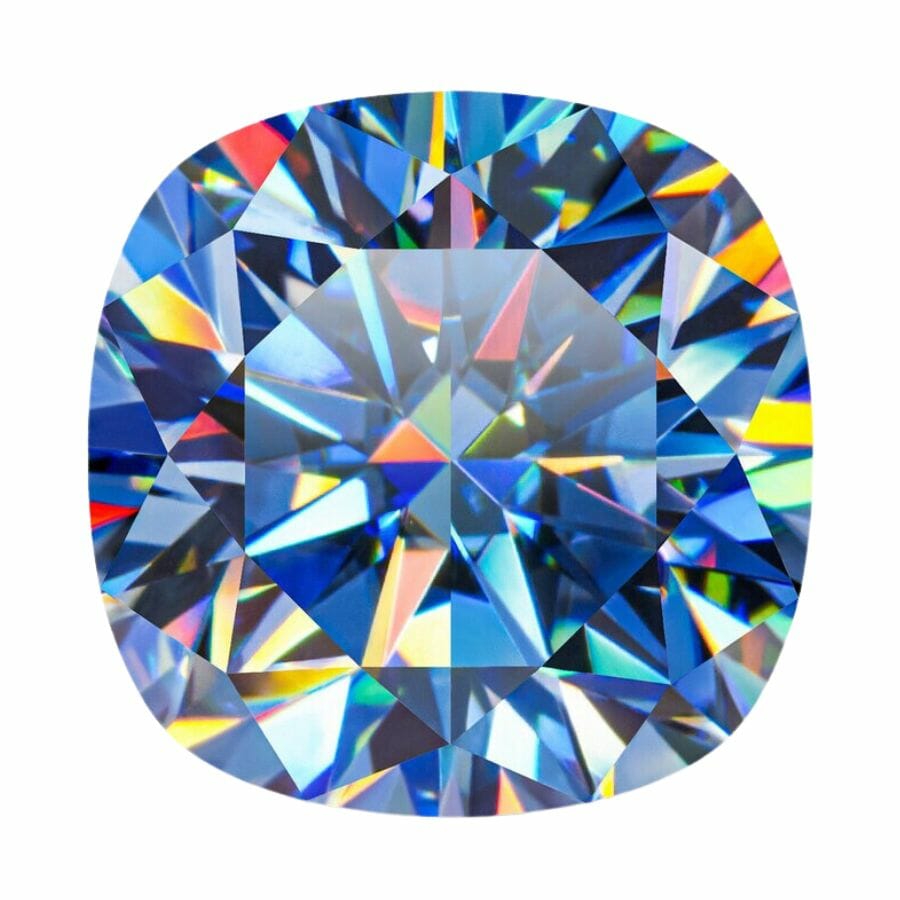
The sparkle in gemstones comes from the way they bend and reflect light. This bending and reflecting of light is called “refraction.” The more a gemstone can refract light, the more it can sparkle with different colors.
Moissanite is known for its gemstone fire. This means it has a special ability to break light into a rainbow of colors. Its high refractive index makes it produce colorful flashes of light.
So, if you look at moissanite under light, you’ll see a lot of bright and varied colors popping out.
On the other hand, cubic zirconia has what we call high brilliance, which means it’s very shiny. It looks a lot like a diamond. However, it doesn’t have the same colorful, fiery flashes that moissanite shows.
Luster – Cubic zirconia shines like the surface of glass
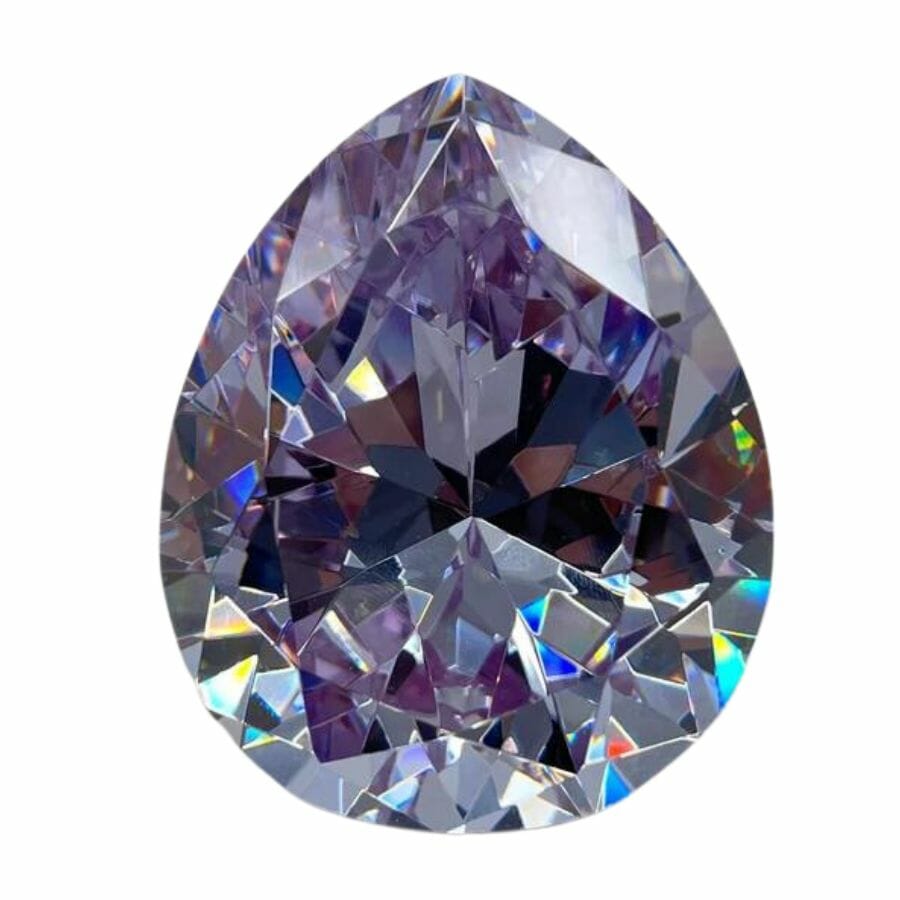
Luster describes the way light reflects off the surface of something, like a gemstone. Imagine looking at a freshly waxed car under the sun. It’s shiny and reflects light really well. That’s because it has a good luster!
Gemstones have their own types of luster. Moissanite, for instance, has what’s called an adamantine to metallic luster.
“Adamantine” is just a fancy way of saying it’s very sparkly and glittery, kind of like a diamond. This is why moissanite is a diamond alternative.
When moissanite has a metallic luster, it means it reflects light like metal does.
So, when you look at moissanite, it can either shine super bright like a diamond or have a glow that reminds you of metal.
Cubic zirconia, on the other hand, has a vitreous luster. “Vitreous” means it shines like glass. So, when you see a cubic zirconia gem, it will have a shiny surface similar to how glass sparkles in the sunlight.
Hardness – Moissanite is almost as tough as diamonds
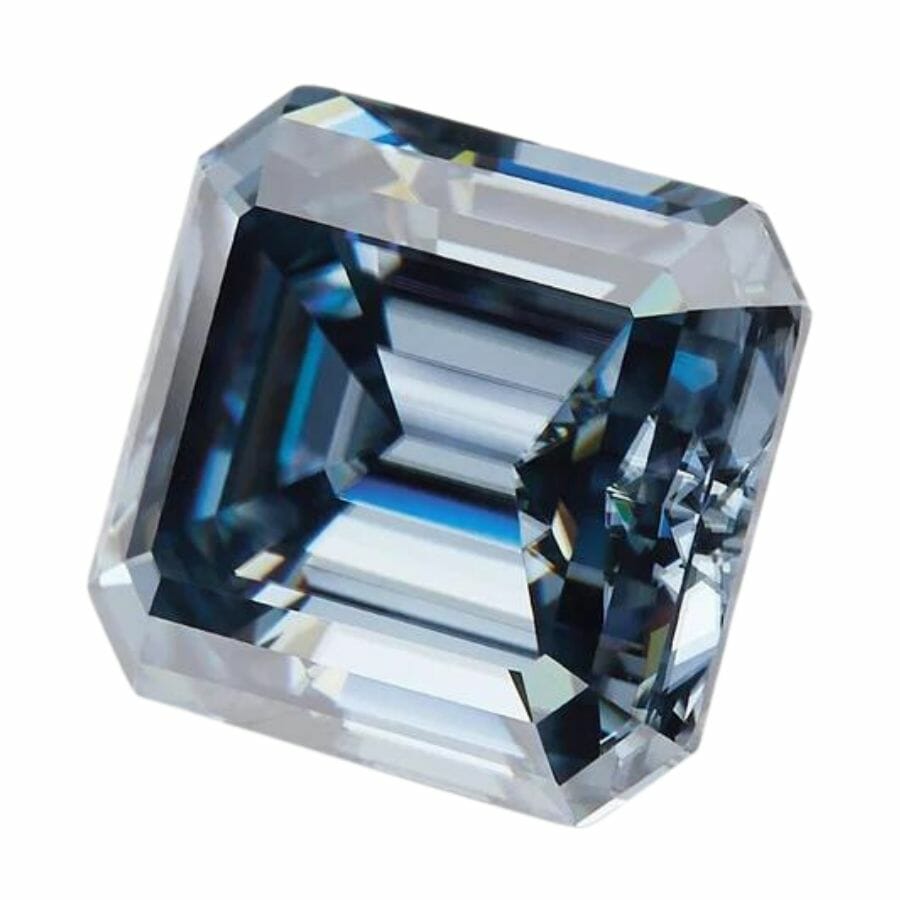
The Mohs hardness scale is a measuring stick for how hard or scratch-resistant minerals are. It’s a scale that goes from 1 to 10.
A mineral with a number 1 would be very soft, like talc (which is in baby powder). On the other end, a mineral with a number 10 is super hard. Diamond is a 10, and it’s the hardest natural material we know!
Moissanite is really close to diamond in hardness, with a Mohs scale rating of 9.25. This means it’s super tough and hard to scratch.
If you had a ring made of moissanite, you wouldn’t have to worry too much about it getting scratched or damaged.
Cubic zirconia is also hard, but not as hard as moissanite. It has a rating of 8 to 8.5 on the Mohs scale. So, it’s tougher than a lot of other stones but can still get scratched more easily than moissanite.
Crystal structure – Cubic zirconia’s molecules form into cubes
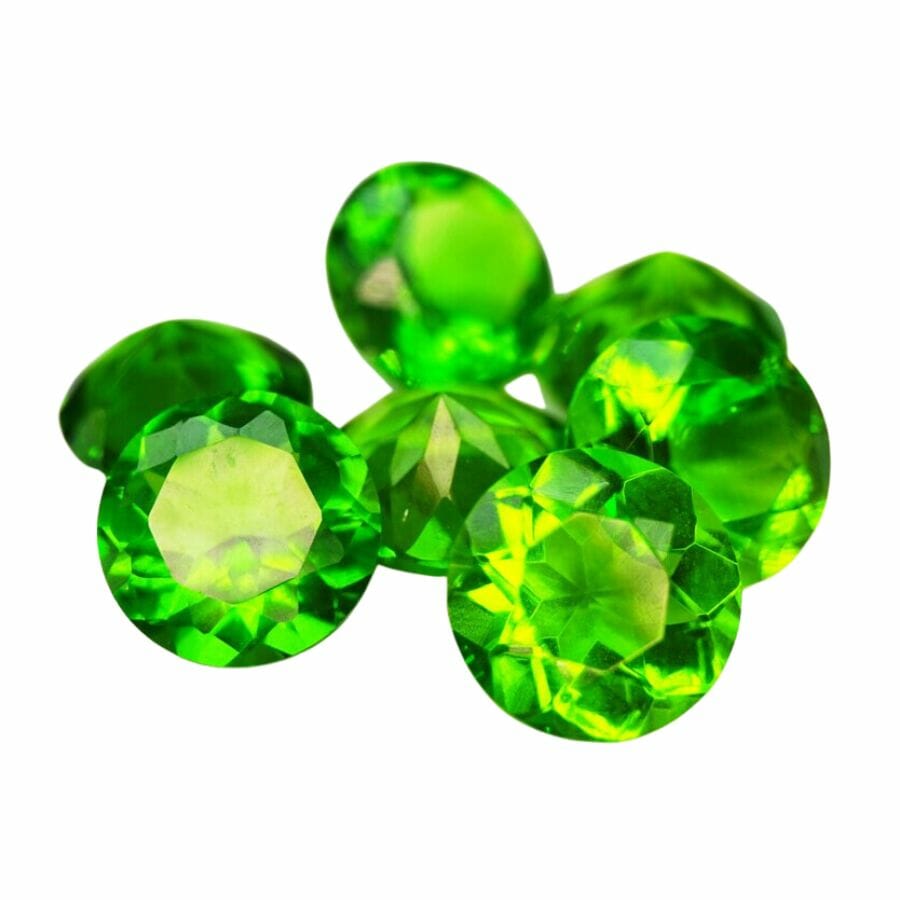
Crystal structure is the pattern that a mineral’s atoms or molecules form. Think of it like arranging toy blocks in different patterns. Some patterns might look like a cube, while others might look like a hexagon.
The way these blocks stack up and connect gives each mineral its unique crystal structure.
Moissanite has a hexagonal crystal structure. This means if you were to look really, really closely at moissanite’s building blocks, you’d see they form a pattern that’s shaped like a hexagon, which means that it has six sides.
Cubic zirconia has a different pattern. Its crystal structure is cubic. This means its building blocks stack up to form a shape like a cube. A cube has equal sides and angles, like dice or a toy block.
Chemical composition – Moissanite is made of silicon and carbon
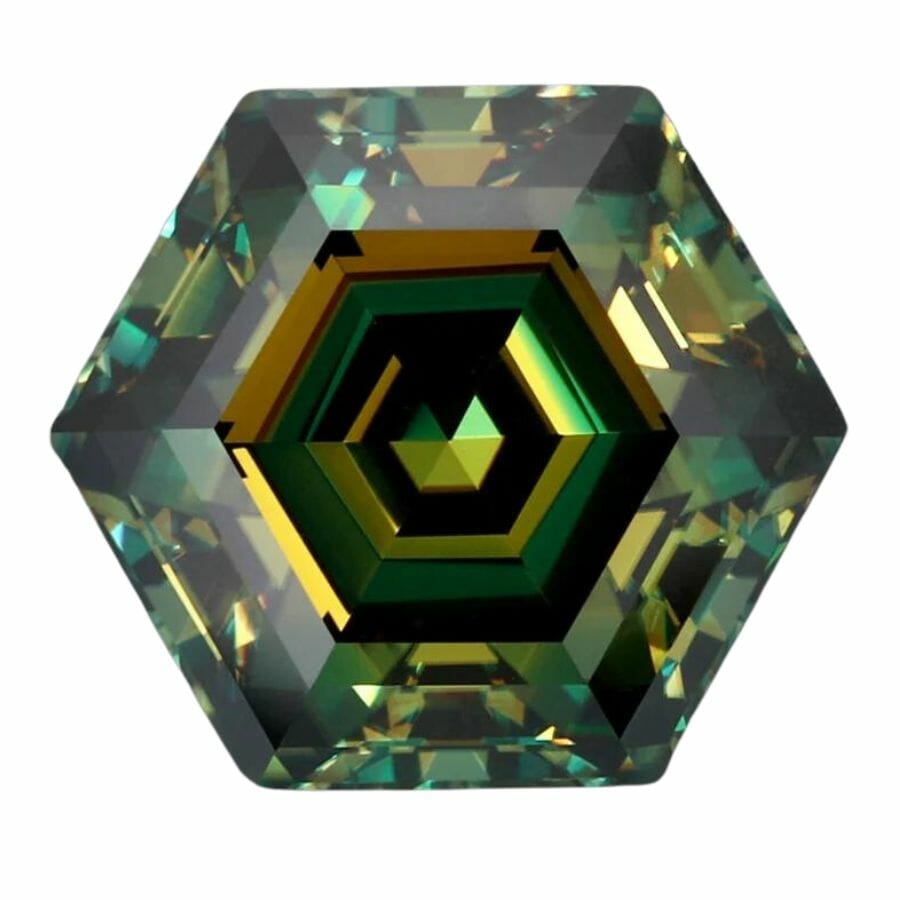
Everything around us is made up of different elements, which are like the basic ingredients of the universe. When these elements combine in specific ways, they form different substances.
The exact recipe of which elements are in a substance and how much of each element is present is the substance’s chemical composition.
Take moissanite, for example. It’s made from two elements: silicon and carbon. When these two elements bond together, they form silicon carbide, which has the SiC.
This formula means that for every silicon atom, there’s a carbon atom bonded to it.
Now, cubic zirconia has a different recipe. It’s made up of zirconium and oxygen. When they bond together, they create zirconium dioxide. So, the formula for cubic zirconia is ZrO2.
This tells us that for every zirconium atom, there are two oxygen atoms connected to it.
Density – Cubic zirconia feels much heavier
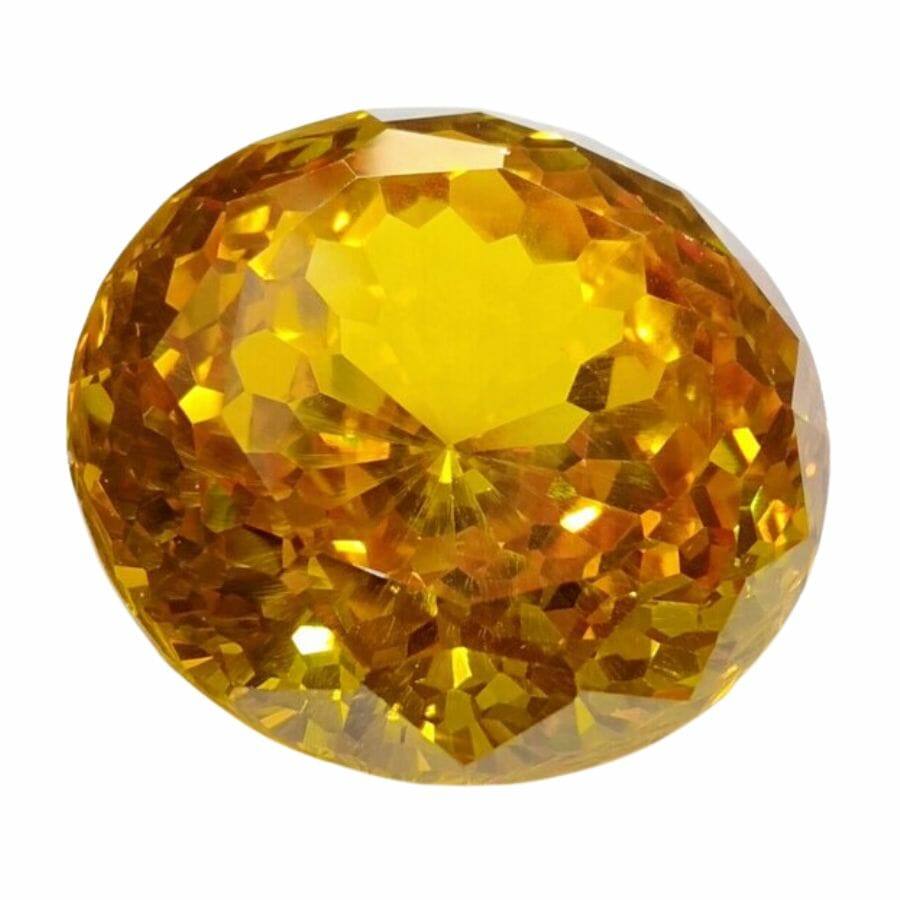
Density measures how much matter is packed into a certain space. Imagine you have two boxes of the same size, but one box is filled with cotton and the other is filled with pebbles.
The box with rocks is going to be a lot heavier. That’s because rocks are more dense than feathers. You can think of density as how heavy something feels for its size.
Moissanite has a density of around 3.218 to 3.22 grams for every cubic centimeter.
On the other hand, cubic zirconia is even denser. Its density is between 5.6 to 6 grams for every cubic centimeter.
This means if you had a piece of cubic zirconia and a piece of moissanite of the same size, the cubic zirconia would feel heavier in your hand.
Formation – Moissanite can form in nature and in labs
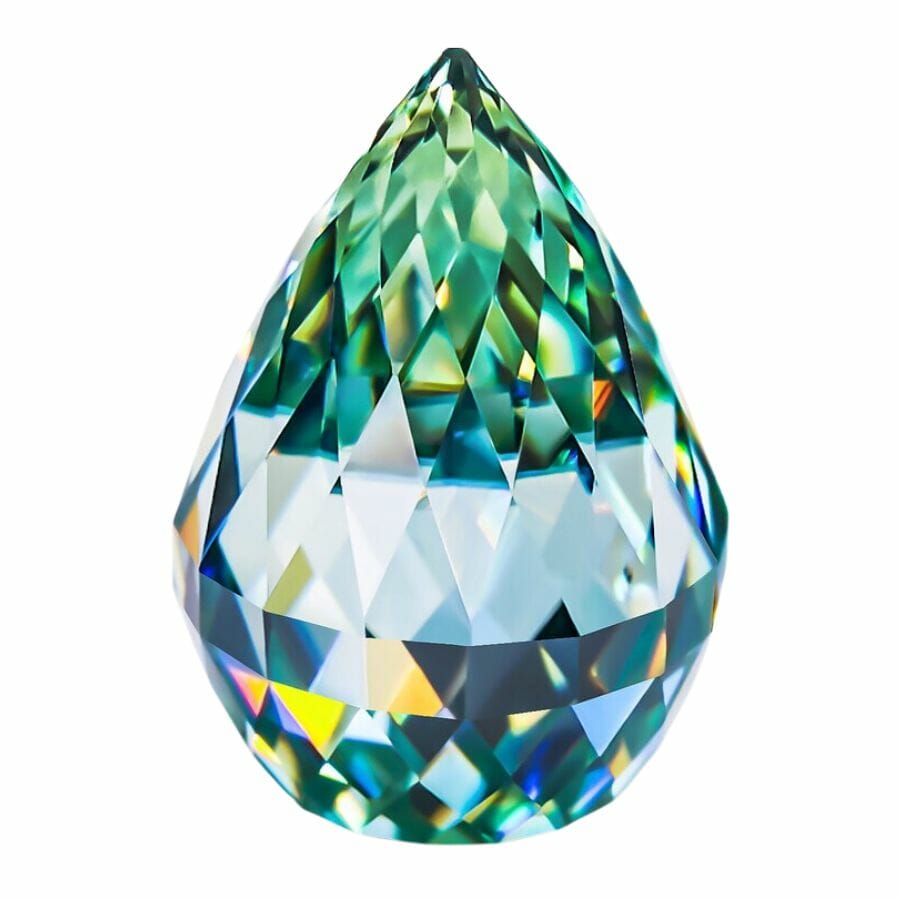
Deep inside the Earth, over long periods of time, a combination of heat, pressure, and the right ingredients can create beautiful gemstones.
Moissanite forms in nature when there’s a lot of heat and pressure, often in places where rocks are undergoing intense changes. The conditions come together just right to produce this shiny gem.
But because natural moissanite is rare, people have also learned to make moissanite in labs.
Scientists recreate the conditions that nature uses, only much faster. They apply heat and pressure to silicon and carbon, and before you know it, moissanite is formed!
Cubic zirconia, on the other hand, doesn’t form naturally at all. Every piece is made in a lab. Scientists melt zirconium oxide powder with a touch of another ingredient, yttrium or calcium, to make it stable.
Once it cools down, we get shiny cubic zirconia.
Though both moissanite and cubic zirconia are lab-created, don’t forget about the excitement of finding natural rocks, minerals, and gems. If you’re curious about discovering some for yourself, look into where to go rockhounding.
Fluorescence – Cubic zirconia can glow yellow or greenish yellow under UV light
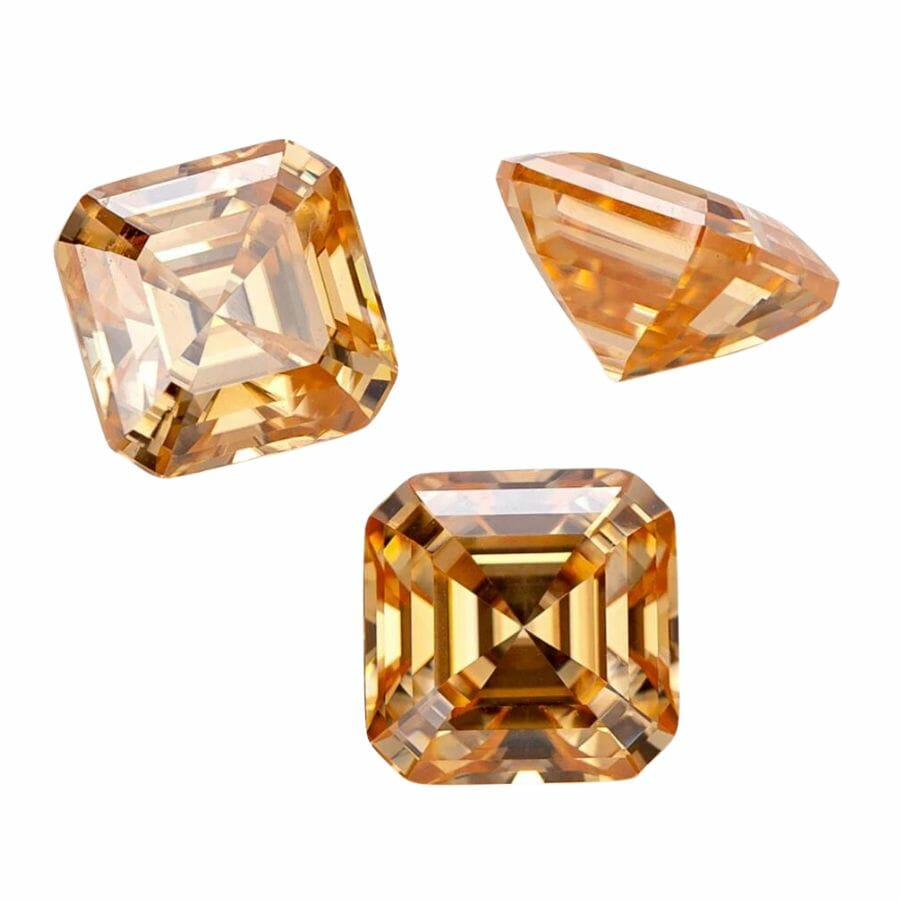
Fluorescence is a cool thing that happens with some materials. When they’re exposed to ultraviolet (UV) light, which is a kind of light we can’t see with our eyes, these materials can glow or give off visible light.
It’s like how some white clothes or teeth can look super bright under a blacklight at a bowling alley. That glowing effect is called fluorescence.
Moissanite and cubic zirconia react differently under UV light. Moissanite, in very rare cases, can glow with an orange color when exposed to UV light.
Cubic zirconia has a different response. When it’s under shortwave UV light, it can glow in colors like yellow, greenish-yellow, or a kind of beige.
But if you use longwave UV light, the glow isn’t as strong. It might give off a whitish light, but it’s much less bright.
However, fluorescence is also rare in cubic zirconia.
Conductivity – Moissanite is a good conductor
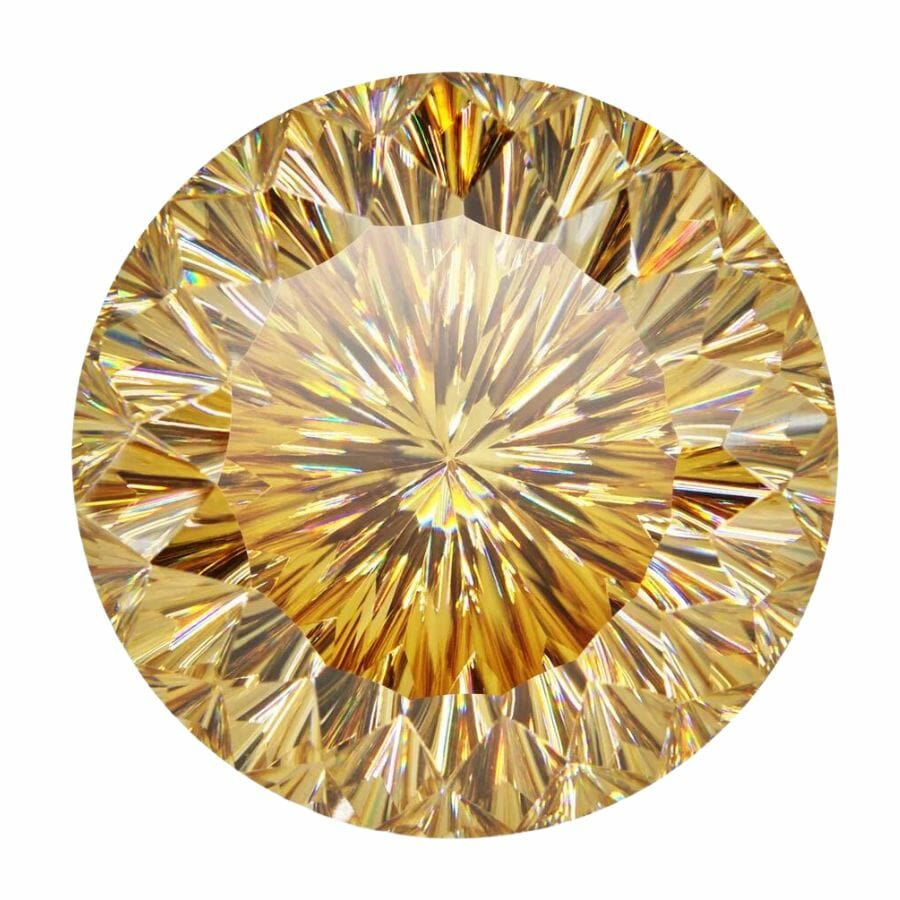
Conductivity describes how well something can pass along energy. Think about a metal slide at the playground on a sunny day. It gets hot super fast because metal is good at moving heat around. That’s conductivity in action.
This can happen with gemstones too. Because moissanite is made of silicon carbide, it’s great at carrying both heat and electricity. Imagine moissanite being like that metal slide, quickly feeling the changes in energy around it.
On the other side, we have cubic zirconia. It doesn’t conduct energy well, especially electricity. If moissanite is like a metal slide, then cubic zirconia is more like a wooden bench. It doesn’t get as hot as quickly.
Price – Cubic zirconia is generally cheaper
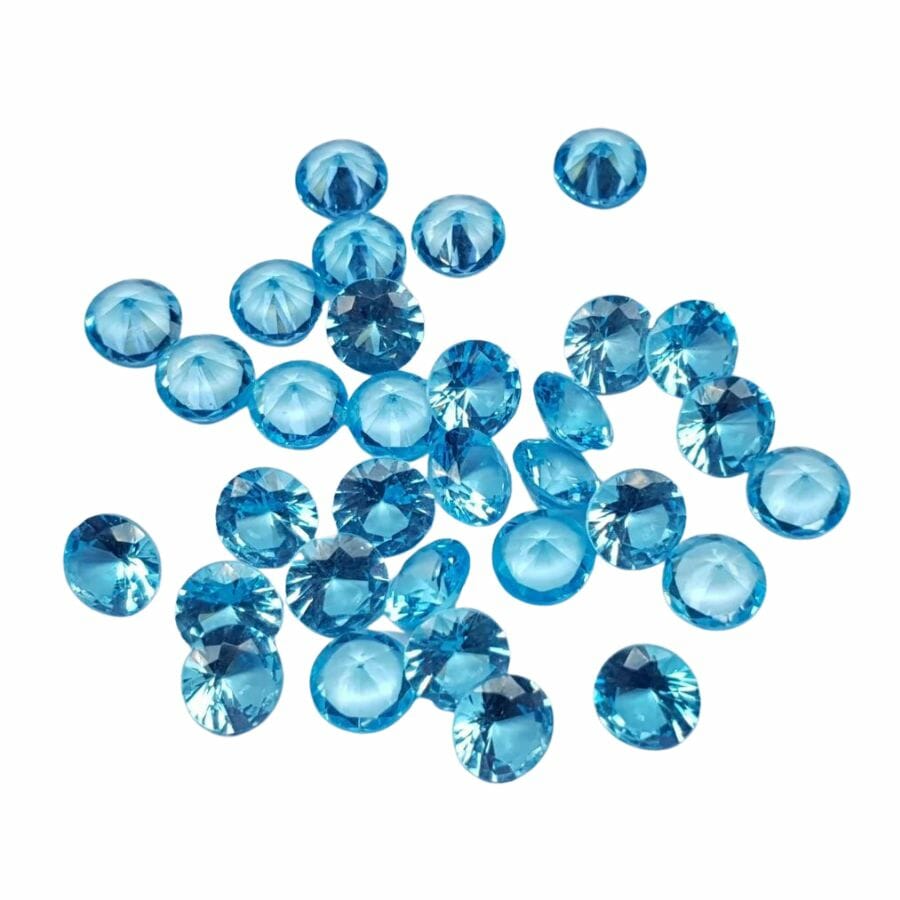
Pricing gemstones is a bit like pricing toys or video games. The rarer the item and the better its features, the higher its price.
Some gemstones are pricey because they’re hard to find, while others might cost more because they look incredible or have unique properties.
Comparing cubic zirconia vs moissanite by their price tags can be a good way to tell them apart.
Moissanite, for example, is usually more expensive than cubic zirconia. One reason is that moissanite has some awesome features, like its ability to sparkle in a way that’s close to a diamond.
Plus, moissanite is often talked about as an alternative to diamonds. Since diamonds are super popular and can be pretty pricey, anything that looks and acts close to a diamond, like moissanite, can also have a higher price tag.
On the other hand, if you’re curious about how much cubic zirconia is, you’ll be happy to know it’s way more budget-friendly.
It shines brightly and looks pretty, but it’s a lot cheaper than moissanite. This makes it a favorite for those who want a gem that looks like a diamond without the high cost.
Location – Moissanite can be found in meteorites and some rock formations
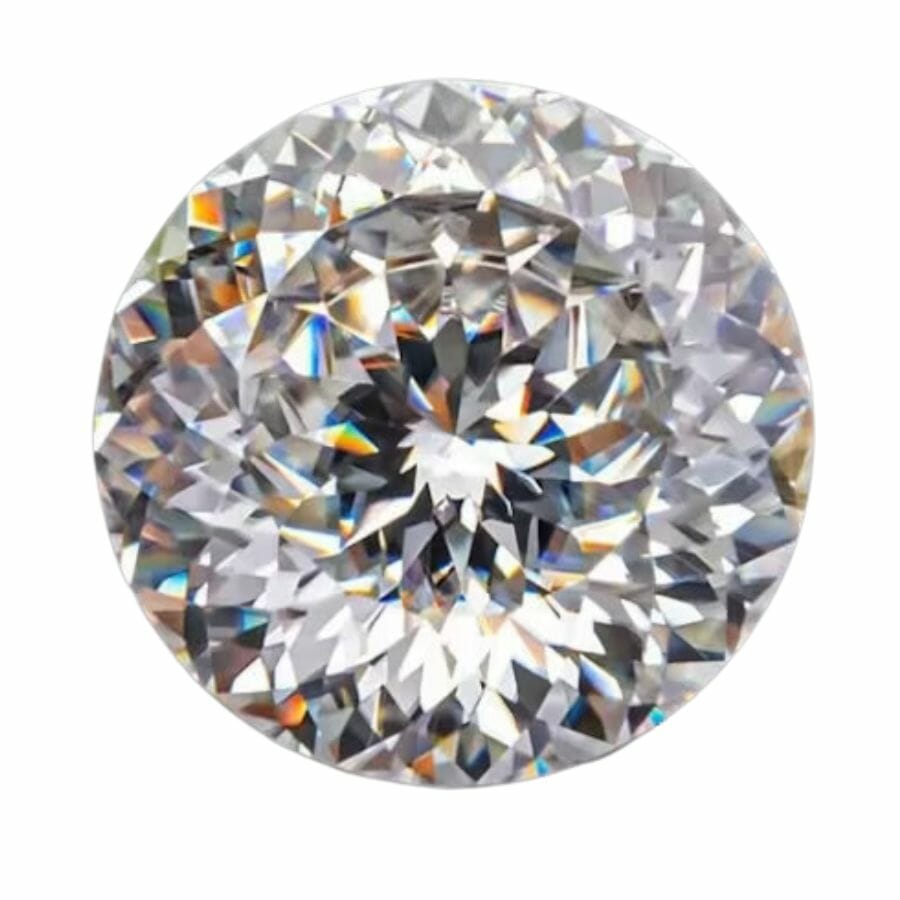
Moissanite has a pretty cool origin story. While it’s often made in labs today, nature does have its own stash.
Natural moissanite is super rare, like a hidden treasure. Some have even been discovered in meteorites, which are pieces of rock or metal from space that land on Earth.
There are also specific rock formations on Earth where moissanite has been found. But since they’re so rare, many jewelers use lab-created moissanite for their pieces.
Cubic zirconia, on the other hand, is always made by people in labs. It doesn’t form in nature at all. In a lab, scientists can control the conditions perfectly to produce this shiny stone.
Even though gems like moissanite and cubic zirconia are often made in labs, nature is full of beautiful gems waiting to be discovered. So, if you’re ever curious, there might be opportunities for finding gems near you!
Cubic Zirconia vs Moissanite – The Similarities
While they have differences, they also share some cool similarities. Understanding what they have in common can make us appreciate the unique world of gemstones even more.
Colors – Both moissanite and cubic zirconia can have a variety of colors
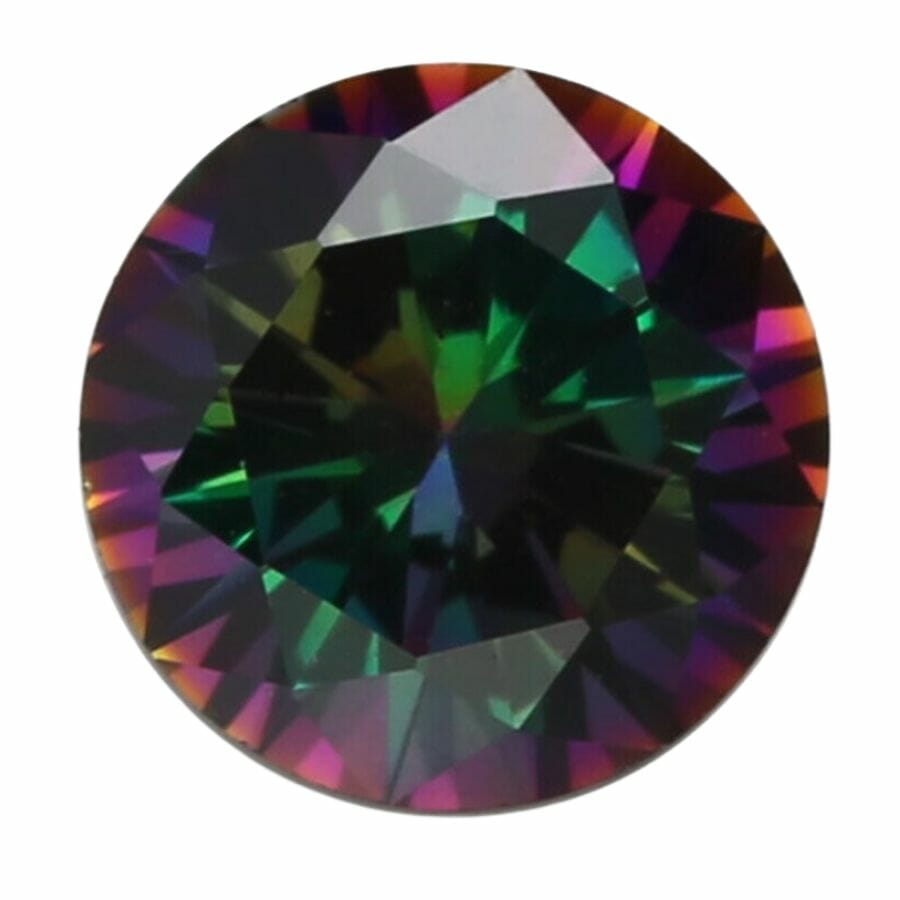
Gemstones come in all sorts of beautiful colors. The colors we see are often due to the materials inside the gemstone. Sometimes, it’s the main ingredient that gives the stone its hue.
Other times, tiny bits of other materials, called impurities, can change the color of a gemstone.
Moissanite and cubic zirconia are interesting because, even though they’re different gemstones, they can both come in a wide range of colors. Just like a box of colorful crayons, you can find these gems in many beautiful shades.
Moissanite is often seen in colors like clear, green, or yellow. But with the help of labs and special processes, it can also be made in a variety of other colors.
Cubic zirconia is also versatile. Scientists can add different elements to produce almost any color you can imagine. From pretty pinks to deep blues, the possibilities are vast.
Streak – The two gemstones have a colorless streak
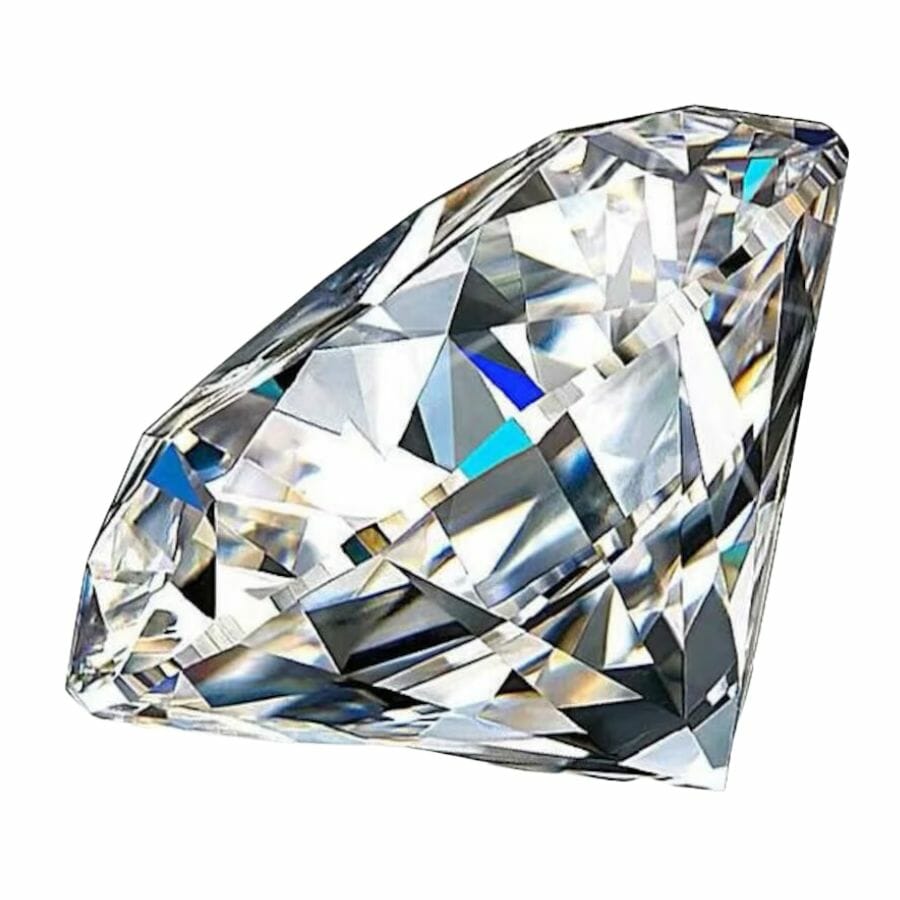
Streak is a neat way to identify minerals. It’s the color a mineral leaves behind when it’s rubbed against a rough surface, like a porcelain tile. Picture drawing on a piece of paper with a crayon. The color you see on the paper is like the mineral’s streak.
Moissanite and cubic zirconia have something in common when it comes to streak: they both leave a colorless mark. That means when you rub them against a porcelain tile, they won’t leave a colored line.
Instead, it’ll look more like a scratch or a mark without a distinct color.
Clarity – Cubic zirconia and moissanite are usually completely clear
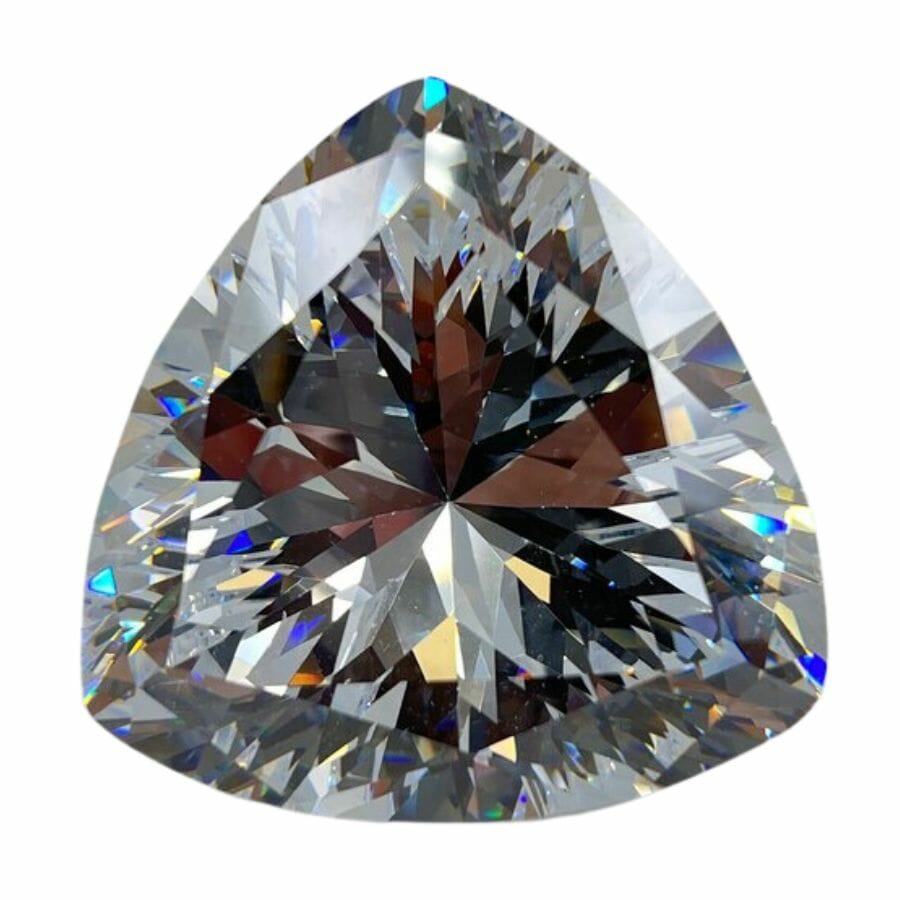
Imagine looking through a window. If it’s super clean, you can see right through it. But if there are little marks, smudges, or cracks, they might block your view. In gemstones, these little marks or spots are called “inclusions.”
Moissanite and cubic zirconia are known for being very clear. Most of the time, it’s they’re “eye-clean.” This means that when you look at them, you won’t see any inclusions or marks with just your eyes.
Since both gemstones are made in labs by scientists, they can control how they form. This means they can make sure it grows without any inclusions. The result is a gemstone that’s typically flawless, or without any marks at all.
Cleavage – Neither gem breaks in smooth planes
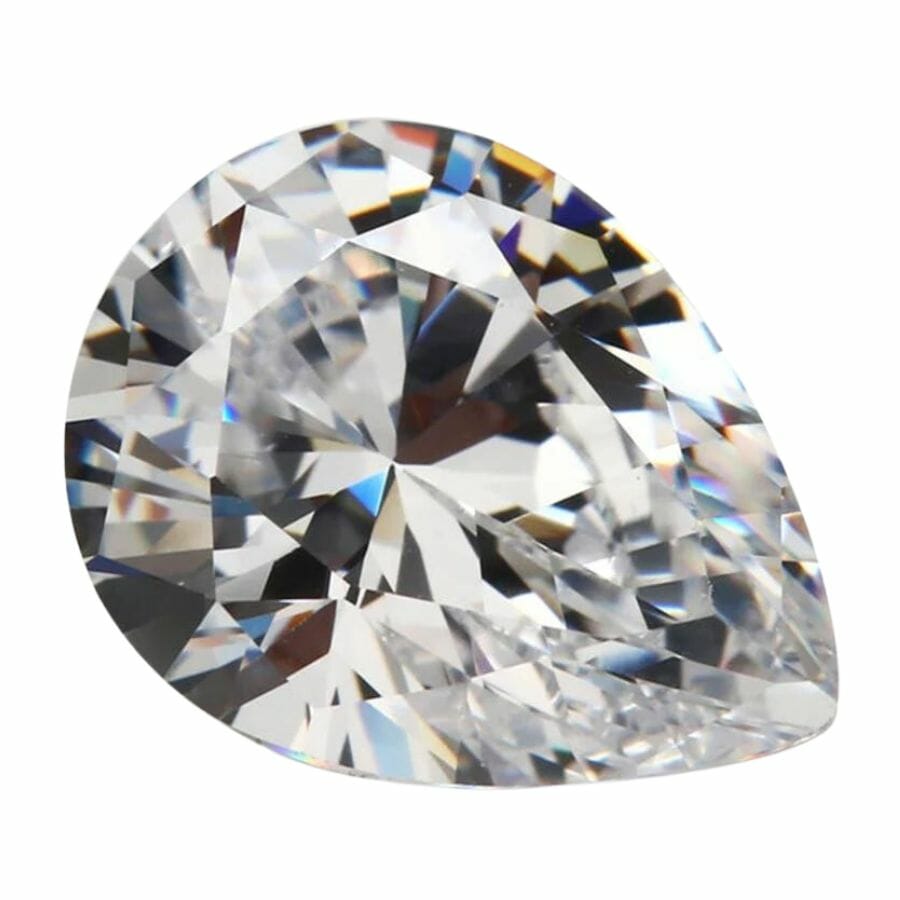
Cleavage describes how a gemstone might break or split. Some gemstones have natural weak spots, like pages in a book. If you apply pressure in the right way, they might split neatly along those lines. Those lines are what we call “cleavage planes.”
Moissanite and cubic zirconia have something in common here: neither of them has cleavage. That means they don’t have those natural weak spots where they could split easily.
This is great news if you’re wearing them as jewelry because they’re less likely to break in clean, straight lines.
Instead, if they were to break, both would show what’s called a “conchoidal fracture.” This means that they’d break in a more curved or shell-like pattern, kind of like how glass shatters.
Magnetism – Both gems are non-magnetic
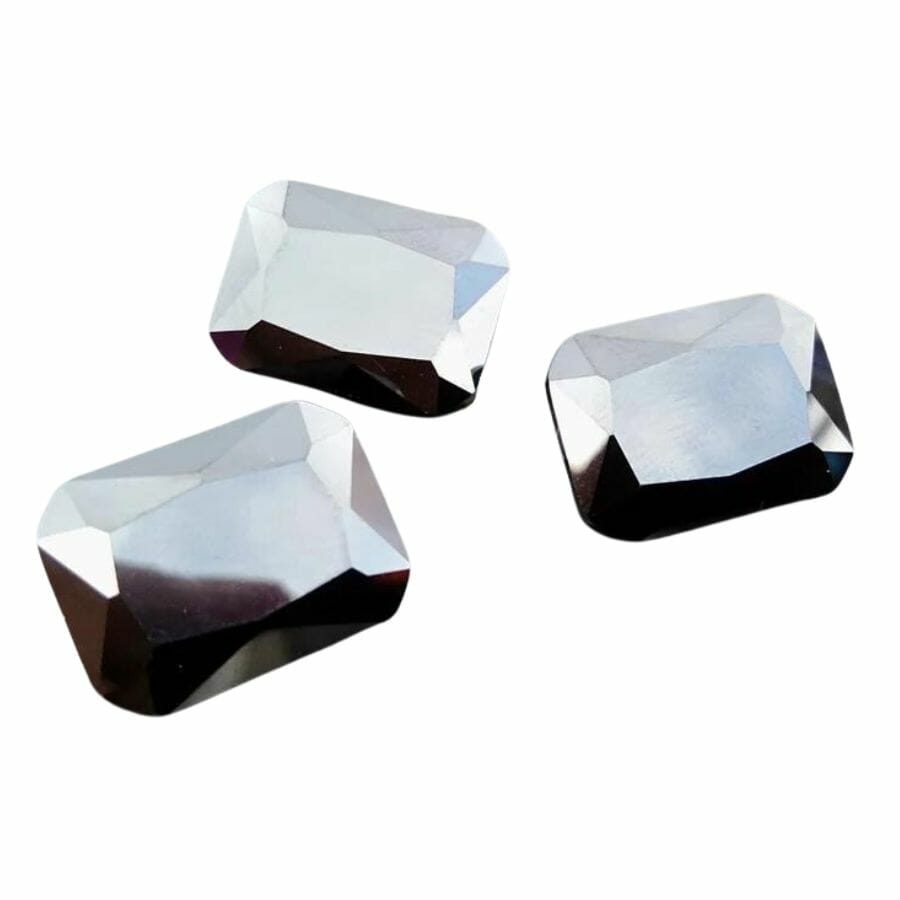
Think of fridge magnets. When you place them on your refrigerator, they stick because they’re attracted to the metal. That sticking or pulling force is called magnetism.
Not everything is magnetic. Some materials are drawn to magnets, while others just don’t feel the pull.
In the world of gemstones, magnetism can sometimes help identify what the stone is. If a stone is attracted to a magnet, it has some magnetic properties. If it isn’t attracted, it’s considered non-magnetic.
Both moissanite and cubic zirconia fall into the non-magnetic category. That means if you held a magnet up to them, they wouldn’t be attracted to it.
The Easiest Ways to Tell Moissanite and Cubic Zirconia Apart
By looking closely and understanding the differences between moissanite and cubic zirconia, we can tell them apart. Here are the things you should pay attention to if you want to know which stone is which.
Look for flashes of “fire”
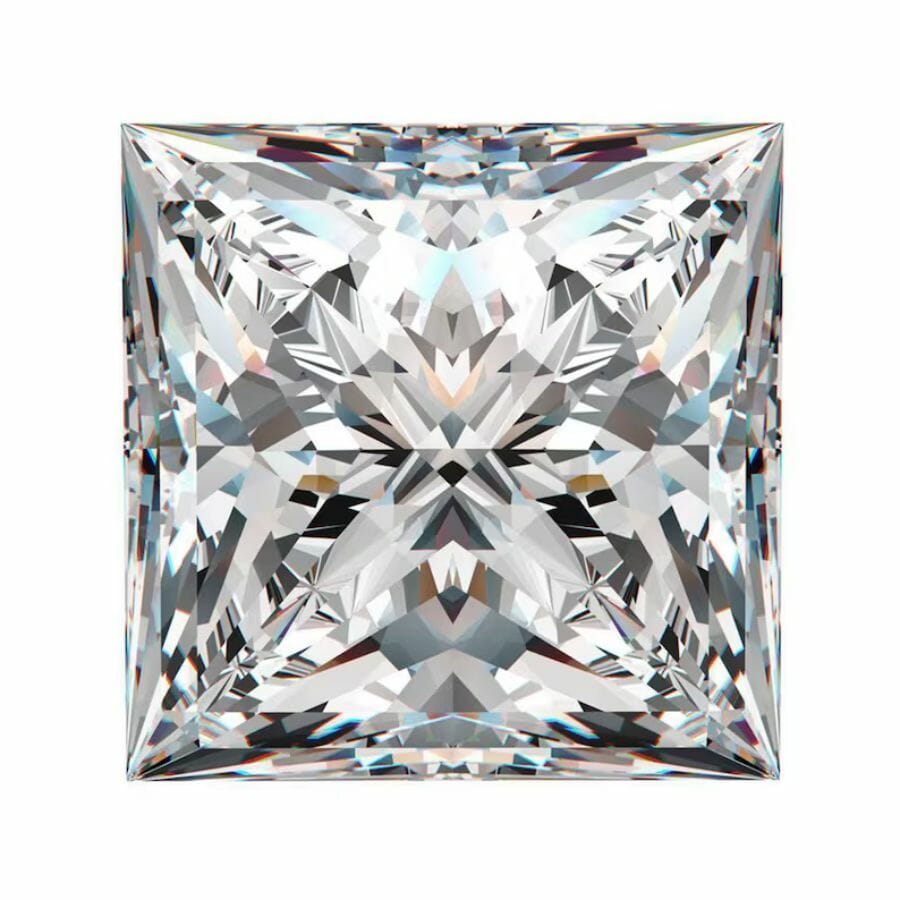
Sparkle and fire in gemstones describe how a gem plays with light and throws it back to our eyes. Moissanite is a superstar in this show. When you move it around under light, moissanite dances with colorful flashes.
These flashes, or “fire,” can be reds, blues, greens, and more. It’s like having tiny rainbows trapped inside the stone. This high level of fire makes moissanite stand out and often grabs attention.
Cubic zirconia, while shiny and bright, plays the light game a bit differently. It does reflect light and sparkle, but it doesn’t give off those rainbow colors like moissanite. Instead, its sparkle is more white and clear.
Feel how the stone weighs
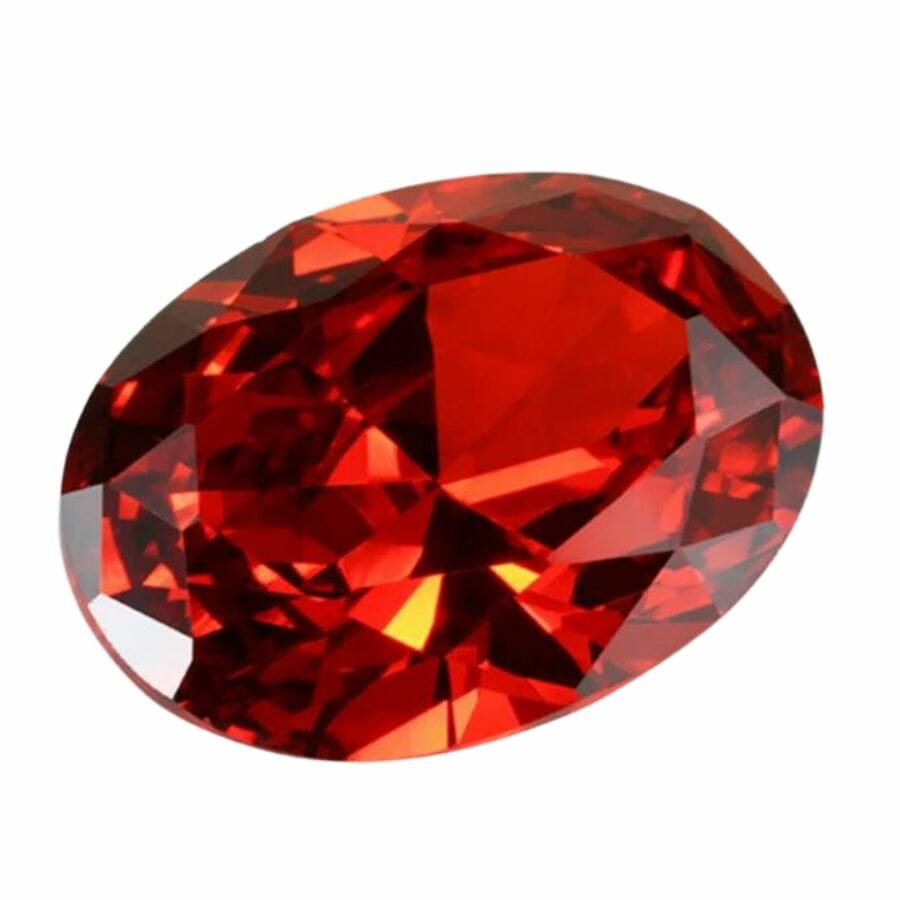
Just like a bag of feathers is lighter than a bag of rocks, even if they take up the same space, gemstones of the same size have different weights too.
Weight can be a great clue when you’re trying to figure out if you have a moissanite or a cubic zirconia gemstone.
Think about a sponge filled with water. Even though it’s full, you can still squeeze out more water. But if you have a solid block, there’s no extra space for anything else.
Cubic zirconia is like that solid block. It’s packed tightly, making it denser and heavier than moissanite.
So, if you hold a cubic zirconia and a moissanite gem of the same size, the cubic zirconia will feel heavier in your hand.
Take the price tag into consideration
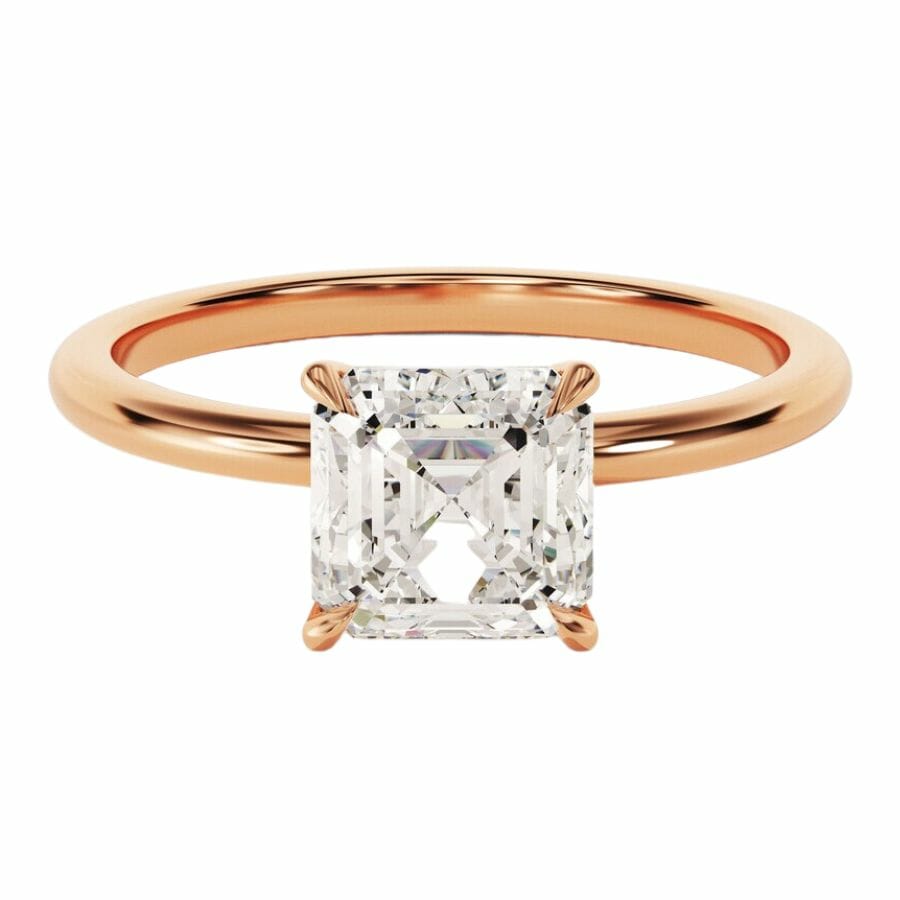
When shopping for jewelry, price can often give you clues about what you’re looking at. Moissanite and cubic zirconia are both beautiful, but they usually come with different price tags.
Because of its close resemblance to diamonds and its unique colorful sparkle, moissanite is often seen as a premium choice. People are willing to pay a bit more for moissanite because it’s seen as a luxurious and long-lasting gem.
Also, its toughness and durability add to its price.
Cubic zirconia, on the other hand, is like the great deal you might find at a sale. It still looks shiny and beautiful, but it doesn’t have the same reputation or features as moissanite. This makes it more affordable.
It’s a popular choice for those who want a gem that looks like a diamond but doesn’t come with a high cost.

